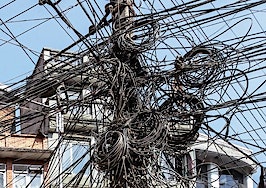- Down payment assistance is growing practically everywhere.
- Most have some kind of income and/or sales price limitations -- but in certain markets, the income ceiling can exceed 180 percent of the median income for the area.
- More than a third of the programs don't include a first-time buyer requirement.
- Mortgage tax credit certificates (MCCs) only account for just 8 percent of the assistance programs, but they are among the fastest-growing form of aid.
San Francisco, one of the highest housing-cost markets in the country, has had some form of down-payment assistance for homebuyers since 1998.
But over the last four years, the city has steadily increased the amount of money it dedicates to helping its citizens buy houses.
The San Francisco story
Three years ago, Mayor Edwin Lee doubled the city’s funding for down payment assistance, but it was hardly enough to satisfy the need for help. And in December, demand depleted the coffers six months before another round of funds is ready to go into effect this coming July.
Now, the city is encouraging buyers searching for help “to be prepared” by attending homeownership counseling class, consulting with their real estate professionals and a participating lender, and building assets “sufficient enough for your required 5 percent down payment, closing costs and three months’ reserves.”
To say that the use of down payment assistance is booming would be an understatement. And it’s growing practically everywhere, not just in the Bay Area.
Down-payment assistance booming
Last year, the Washington State Housing Finance Commission spent $42.8 million, an increase of 54 percent from 2015, on down payment and closing cost help for more than 5,000 buyers. And since 2013, Denver has spent $8.6 million to assist almost 1,100 buyers.
Today, nearly 2,500 government, municipal and non-profit programs are available across the country.
Unfortunately, many homebuyers are missing out on them because they don’t know about them. Their agents don’t know about them, either — that, or they don’t want to be bothered.
“The biggest problem with assistance programs is awareness,” says Rob Chrane of Down Payment Resource, an online database that makes it easy for buyers and their agents to find and understand what’s available.
Available programs
The various programs go under the heading of “down payment assistance,” which makes it seem as though they are strictly for low and moderate-income buyers, or those buying their first homes.
But that’s hardly the case.
Yes, most have some kind of income and/or sales price limitations. But in certain high-cost markets, the income ceiling can exceed 180 percent of the median income for the area. And more than a third of the programs don’t include a first-time buyer requirement.
Even with income limits, though, benefits can range from a few thousand dollars to tens of thousands. In Miami-Dade County, Florida, for example, the 39 assistance programs currently available range in benefits from $3,000 to $100,000, according to Chrane.
In Chicago, a family of three to six people earning up to $80,000 has access to 11 different programs, including a $2,000-a-year federal income tax credit for the life of the mortgage, a grant of 3 percent of the loan amount to use to cover a down payment and closing costs, or an interest-free loan of $5,000 to use as part of the down payment and closing costs.
Nationally, the average down payment benefit is $7,333, according to the latest tabulation by Down Payment Resource. And across all 2,359 programs now available, the average benefit of any kind, not limited to down payment assistance, is $22,138.
With money like than on the table, the benefits are worth looking into.
“You might not qualify, but you ought to at least look,” said Chrane, who spent nearly half-a-dozen years to get his arms around the details of the various assistance programs.
“Just as we would advise buyers to get prequalified for financing, we also recommend that they determine if there are any ownership programs that fit their personal situations,” the former loan officer says.
Who offers down payment support — and for whom?
The Down Payment Resource search engine tracks programs from 1,250 housing agencies, a little more than a third of which do not include a first-time buyer requirement.
The site not only matches buyers to the programs that are available to them but also flags houses listed for sale that are eligible for them to purchase.
All the assistance programs are available for single-family houses, including townhouses and condominium apartments. In just under 17 percent, two- to four-unit properties are also eligible. In many cases, the programs can be combined with each other and used with all types of loans, including those backed by Uncle Sam.
Nearly 15 percent of programs are aimed specifically at veterans, first responders, educators, persons with disabilities or other special circumstances.
Some 71 percent of the programs currently listed in the database offer help with down payments and closing costs. They include grants — which need not be paid back — and no-interest or low-interest second mortgages with payments that may be deferred or forgiven. There are also neighborhood stabilization programs aimed at revitalizing communities hit hard by foreclosures or unemployment.
What’s an MCC?
Although mortgage tax credit certificates (MCCs) only account for just 8 percent of the assistance programs, they are among the fastest-growing form of aid, according to Chrane. MCCs help qualified low and moderate-income buyers offset a portion of the interest they pay every year for the life of their loans.
The MCC program was established by the Deficit Reduction Act of 1984 and modified by the Tax Reform Act of 1986.
The maximum tax credit allowable each year is $2,000 — maybe not much, in the grand scheme of things. But it is a dollar-for-dollar reduction against your federal tax liability, as opposed to a typical deduction, so it comes directly off your bottom line.
Better yet, as with many other kinds of assistance, they can be layered onto other government programs that also seek to make housing more affordable. And lenders sometimes add the credit to your income, so you might qualify to purchase a bit more home.
According to the latest figures from the National Council of State Housing Agencies (NCSHA), state authorities boosted their MCC issuances of MCCs six-fold between 2011, when they issued 4,014 credit certificates, to 2015, when they handed out 24,430.
And that doesn’t include the numerous local housing finance authorities, which also issue MCCs. In Texas, Down Payment Resource counts 19 local issuers besides the state agency. In California, 12 local issuers offer MCCs.
Currently, nearly two-thirds of the 52 states and the District of Columbia issue the certificates. Here are the program’s basics:
- Each year, the credit is calculated based on a percentage of the total interest paid on the loan that year. The percentage varies depending on the program, but it ranges from 20 percent to 50 percent. According to Down Payment Resource, 40 percent is typical.
- The certificate remains in effect for the term of the mortgage, as long as the underlying property remains your principal residence. You can adjust your withholding on your W-4 to take the credit into account, so you will have a bit more take-home pay. And your lender can use the added income to approve a somewhat larger loan. Homebuyer education is required, though. You must take a course from a counseling agency approved by the Department of Housing and Urban Development prior to closing.
- The program is open to individuals and families who meet certain income and purchase requirements. These rules are different for each issuing authority. In Maryland, for example, the maximum sales price ranges from $255,000 in rural areas to $525,000 in Baltimore proper. Income limits also vary in the Old Line State, based on household size, from $89,000 in rural areas to $152,000 in urban areas.
- Across the Potomac River in Virginia, meanwhile, the max sales price ranges from $251,900 in rural spots to $500,000 in urban core areas. The max income ranges from $121,900 for one- and two-person households to $142,300 for households with three to eight people.
- In Virginia, however, there is a significant federal recapture tax if you sell the house within nine years and realize a significant increase in income. Also, you must use the house as your primary residence and cannot have owned your main home for the previous three years. Veterans are exempt from the three-year rule.
Again, the maximum amount of the credit cannot exceed $2,000 in a single year. And the credit cannot be any larger than your federal tax liability after all other credits and deductions have been taken into account. But credits in excess of your current-year tax liability can be carried over for use in subsequent years.
Lew Sichelman’s weekly column, “The Housing Scene,” is syndicated to newspapers throughout the country.












